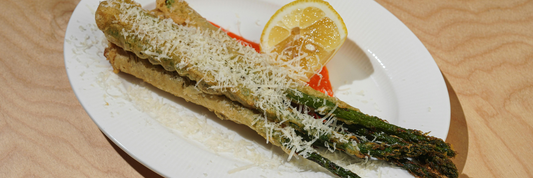Food packaging with paper is becoming more and more common. It comes in various forms and types. And your company may be using it on a daily basis. Have you, however, been questioned about this material? The following is an overview of food packaging with paper that will assist you in understanding and selecting the best paper packaging for your business.
Is paper good for food packaging?
To figure out whether paper can be used to package food, compare it to other materials, to find out how paper may be used with foods.
What are the 5 materials used in food packaging?
There are 5 traditional materials used in food packaging including: glass, metals (aluminum, foils and laminates, tinplate, and tin-free steel), paper and paperboards, and plastic. Here is a quick table comparing advantages and disadvantages of these 5 materials:
|
Material |
Advantages |
Disadvantages |
Cost |
|
Glass |
Non-reactive, excellent barrier, transparent, reusable, high thermal resistance |
Heavy, fragile, expensive, breaks easily |
High |
|
Aluminum |
Lightweight, strong, excellent barrier, malleable |
Reacts with acidic foods, leaching, requires special recycling |
Moderate |
|
Foils & Laminates |
Lightweight, flexible, excellent barrier, attractive designs |
Difficult to recycle, may contain harmful chemicals |
Moderate to High |
|
Tinplate/Steel |
Strong, durable, excellent barrier, easy to decorate |
Heavy, reacts with acidic foods, may require lining |
High |
|
Paper/Paperboard |
Lightweight, recyclable, biodegradable, printable |
Not strong, susceptible to moisture/grease, limited barrier |
Low |
|
Plastics |
Lightweight, strong, flexible, excellent barrier, inexpensive, some recyclable |
Leeches chemicals, not always recyclable, pollution, may require special coatings |
Low to Moderate |
From the table we can see that paper and paperboard are an affordable material that is lightweight, recyclable, printable. This material is printable, then it can be used as a takeaway, single-use and eco-friendly packaging.
What is the paper used in packaging called?
In packaging, paper is commonly used as primary or secondary packaging.
When it comes to primary packaging, paper will be made with a coating or lining to enhance the paper’s protective and functional properties. They are found as:
- Kraft paper: Strong, versatile, and often used for bags, boxes, and wrapping paper.
- Sulphite paper: Smooth and printable, commonly used for labels and liners.
- Greaseproof paper and glassine: Resistant to grease and moisture, perfect for wrapping greasy foods or lining boxes.
- Parchement paper: Heat-resistant and non-stick, ideal for baking and cooking.
When paper is used as secondary packaging, they are known as paperboard. This type of paper is usually thicker and heavier than the paper making primary packaging. Here are common types of paper board:
- White paperboard: Stiff and smooth, suitable for boxes, cartons, and cards.
- Solid paperboard: Strong and durable, used for heavy-duty packaging like boxes and crates.
- Chipboard: Inexpensive and lightweight, often used for backing and inner packaging
- Fibreboard: Corrugated, offering excellent cushioning and protection, ideal for shipping boxes.
There is also another form of paper called paper laminates which are coated or uncoated paper based on kraft and sulphite tissues.
Details of Uncoated Paper Cups
What type of paper can be used for food packaging?
To be used as food packaging, paper is usually used as primary packaging which can be kraft paper, greaseproof paper, glassine and parchment paper. However, it depends on which type of food, the paper used can be white paperboard and coated paper.
Here are a table showing details of each type:
|
Paper Type |
Strengths |
Weaknesses |
Common Uses |
|
Kraft paper |
Strong, durable, tear-resistant, recyclable |
Can absorb moisture and grease |
Bags for dry goods, boxes |
|
Glassine paper |
Greaseproof, translucent, some moisture resistance |
Not very strong or durable |
Candy box liners, greaseproof wrapping, interleaving paper |
|
Waxed paper |
Greaseproof, moisture-resistant |
Not very strong or durable |
Wrapping sandwiches, cheeses, greasy foods |
|
Coated paper |
Smooth surface for high-quality printing, customizable properties |
More expensive than other types of paper |
Boxes, cartons, labels, wrappers |
|
Vegetable parchment paper |
Greaseproof, heat-resistant up to 450°F |
Not very strong or durable |
Baking and cooking, lining baking sheets, wrapping delicate foods |
|
White paperboard |
Smooth, bright white surface, stiff, foldable |
Not very strong or durable, can absorb moisture |
Boxes, cartons, trays |
What Are Applications of Paper in Food Packaging?
What Are Common Items of Food Packaging with Paper?
When using with food, paper can work as primary and secondary packaging. Here are some specific examples of uses of paper in food packaging:
Primary Packaging
- Bags: Cereal bags, tea bags, bread bags, snack bags, potato chip bags.
- Wraps: Sandwich wraps, cheese wraps, candy wrappers, cookie wrappers, wax paper for packing lunches.
- Liners: Cupcake liners, muffin liners, basket liners, food tray liners, pizza box liners.
- Pouches: Stand-up pouches for coffee beans, nuts, spices, dried fruits, pet food.
- Sleeves: Coffee sleeves, soda can sleeve, yogurt sleeves.
- Cups and tubs: Paper cups for ice cream, yogurt, coffee, soup. Paper tubs for popcorn, butter, dips.
- Clamshells: Paper clamshells for sandwiches, salads, fruit.
- Boxes: Small paper boxes for chocolates, cookies, pastries, candies.
Secondary Packaging
- Boxes: Cereal boxes, pasta boxes, cracker boxes, frozen food boxes, pizza boxes.
- Cartons : Milk cartons, juice cartons, soup cartons, broth cartons.
- Six/Twelve-pack holders: Paperboard carriers for cans of beer, soda, juice, etc.
- Baskets: Paperboard baskets for fruit, vegetables, baked goods.
- Crates: Paperboard crates for apples, oranges, other fruits and vegetables.
- Shipping boxes: Corrugated cardboard boxes for bulk shipments of food products.
- Additional Items:
- Napkins: Used in restaurants and food service settings.
- Placemats: Used at restaurants and cafes.
- Labels: Found on virtually all packaged food products.
- Coffee filters: Used for brewing coffee in various methods.
- Sandwich bags: Used for carrying and storing sandwiches.

What type of food can be used with paper food packaging?
From the list below, we can see that paper packaging can be used with different types of food, which includes:
- Baked goods: Bread, pastries, cookies, crackers, muffins
- Snacks: Nuts, chips, candy, popcorn, dried fruits
- Cereals: Oatmeal, breakfast cereals, granola
- Pasta and rice: Uncooked pasta and rice have long shelf lives and low moisture content.
- Beans and lentils: Dry beans and lentils are shelf-stable and suitable for paper packaging.
- Flour and sugar: These dry ingredients are ideal for paper bags and boxes.
- Coffee and tea: Beans and loose leaves are dry and suitable for paper packaging.
But there are some kinds of food that need to be carefully considered when using with paper packaging, including:
- Food with high moisture content: fresh meat, seafood, poultry, fruits, vegetables, dairy
- Acidic foods: tomatoes, citrus fruits, pickles, sauerkraut
- Long shelf-life requirement: products needing airtight or specialized packaging
What are the advantages of paper packaging?
Paper packaging offers different benefits to environments while being an ideal replacement to plastic packaging without hurting business’s budget. As a result, food packaging becomes so useful and popular in food and beverage industry. Here are the benefits detailed for environments and business:
Environmental Benefits
- Biodegradable and recyclable: Paper is a natural material that decomposes quickly and easily in landfills, reducing the amount of waste sent to incinerators. Additionally, paper is one of the most recycled materials in the world, significantly reducing the need for virgin materials.
- Renewable resource: Paper is made from trees, a renewable resource that can be grown and harvested sustainably. This contrasts with non-renewable resources like oil and plastic, which contribute to environmental degradation.
- Reduced carbon footprint: The production of paper packaging requires less energy and generates fewer greenhouse gases than the production of other packaging materials like plastic and metal. This reduces the overall environmental impact of packaging.
- Conserves resources: Paper packaging is lightweight and requires less material to produce. This translates to a lower consumption of resources like water and energy.
- Safe for food contact: Paper is a non-toxic material that doesn't leach harmful chemicals into food. This makes it a safe and healthy choice for packaging food.
- Compostable: Certain types of paper packaging are compostable, meaning they can be broken down into organic matter that enriches the soil. This further reduces the amount of waste going to landfills.
Benefits for Business
- Cost-effective: Paper is a relatively inexpensive material compared to other packaging options. This can lead to significant cost savings for businesses, especially those with high packaging volumes.
- Lightweight and versatile: Paper packaging is lightweight and easy to transport, which can help reduce shipping costs and greenhouse gas emissions. It is also highly versatile and can be molded into a variety of shapes and sizes to accommodate a wide range of products.
- Printable and customizable: Paper absorbs ink well, making it ideal for printing high-quality graphics and information. This allows businesses to customize their packaging with their logos, branding, and product information.
- Durable and protective: Despite being lightweight, paper can be surprisingly strong and durable. This, along with appropriate coatings or laminates, can provide sufficient protection for many products.
- Aesthetically pleasing: Paper packaging can be designed to be visually appealing and contribute to a brand's image. This can help businesses attract customers and improve their brand perception.
- Sustainable reputation: Consumers are increasingly concerned about the environmental impact of products. Using paper packaging can help businesses improve their sustainability reputation and attract environmentally conscious customers.
- Increased sales: Studies have shown that consumers are willing to pay more for products packaged in sustainable materials like paper. This can lead to increased sales and revenue for businesses.
Food Packaging with Paper from Kimecopak
As a trused food packaging provider for North American Market, Kimecopak offers wholesale numerous paper food products including:
The products listed above are intended to replace disposable plastic items. Because they are all made from high-quality paper and renewable, eco-friendly materials, the environmental effect of business operations is reduced. Furthermore, the goods are very versatile, suitable for a wide range of culinary and catering demands. For more information, please contact us via email halo@kimecopak.ca or Kimecopak Facebook Fanpage.

Frequent Asked Questions
Is paper food packaging biodegradable?
Yes, paper food packaging is biodegradable, meaning it can decompose naturally over time. The decomposition rate depends on the type of paper and the environmental conditions, but it typically takes several months or years.
Is recycled paper food safe?
Yes, recycled paper can be food safe as long as it meets specific regulations and is properly processed. These regulations ensure that the recycled paper does not contain harmful contaminants that could leach into food.
Is paper food packaging microwavable?
Most paper food packaging is not microwavable. Microwaves can cause the paper to burn or melt, and the heat may not be evenly distributed throughout the food. However, some paper food packaging is specifically designed to be microwavable. Look for the microwave-safe symbol on the packaging before using it in the microwave.
What can and can’t put in microwave?
Do paper bags keep food cold?
Paper bags offer some insulation, but they are not very effective at keeping food cold. If you need to keep food cold for a long time, it is best to use a cooler or insulated bag.
Do paper bags keep vegetables fresh?
Paper bags can help to keep vegetables fresh by allowing them to breathe. However, they are not as effective as plastic bags in preventing moisture loss. If you need to store vegetables for a long time, it is best to use a plastic bag with holes punched in it.




